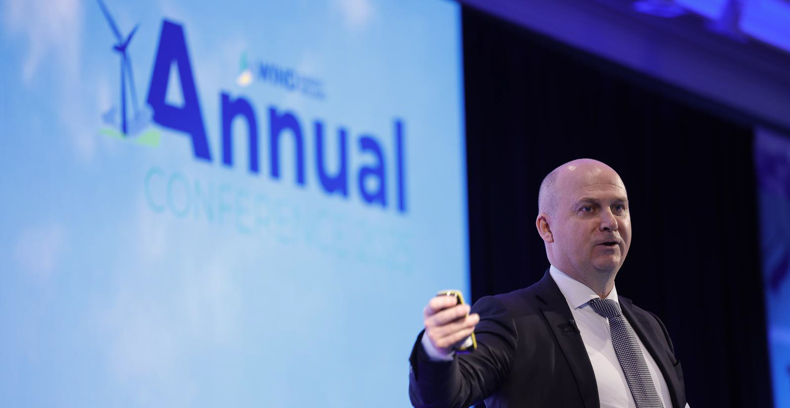MD Stephen Wheeler reflects on his attendance at the Wind Energy Ireland Annual Conference

I was delighted to give a keynote address at Wind Energy Ireland's Annual Conference in Dublin. There was a real sense among attendees of the need to turn our renewables ambition into urgent action to meet Ireland's 2030 targets. Because as leaders in our industry and in wider society, we need to do everything possible to stop the continuous increase in global temperatures with record carbon emissions which are threatening our very existence.
The best leaders leave a legacy and ours must be the planet. That’s why at SSE we’re building the world’s largest offshore wind farm, Dogger Bank. It’s a project of globally significant scale. When complete, it will generate 3.6GW of renewable energy from the North Sea, powering 6 million homes annually. But let’s put this into a global context. The world needs 2,000 Dogger Banks between now and 2030 to fight the climate and nature crisis. That’s today’s reality.

As the most westerly outcrop in Europe, the island of Ireland has a massive wind resource, giving us a massive ability to deliver. Thanks to the steps we’ve taken so far, Ireland’s onshore wind generation fleet is the backbone of our energy system. At SSE Renewables our own delivery of the 101MW from Yellow River Wind Farm in Offaly – Ireland’s newest wind farm – has powered Ireland to 5GWs of installed renewables capacity. But we need to treble that within the next five years!
In the 20 years since Arklow Bank 1 was unveiled as the country’s first offshore wind farm, we’ve had six Taoisigh, ten governments, a bailout and a pandemic, and much more. And yet, we’ve delivered zero new offshore wind MWs.
With Phase 1 Irish Sea offshore wind projects now in the marine planning system, we must treat each as a national priority to be delivered. That means getting timely consent decisions and prioritised grid connections.
Across the wider renewable technologies and the grid they depend on, we must streamline our planning process to deliver the vital energy infrastructure we need now. That means implementing the new Planning and Development Act as a priority – ensuring we have the right resources in place – and aligning our local and strategic planning decisions with national climate targets.
And in a world of economic challenge, we need fair routes-to-market to enable projects to be investible, whether through fit-for-purpose CfD auctions or corporate PPAs.
With a new Irish Government being established, the time for action is now. And it starts with our political leaders, working with industry and stakeholders. It is incredibly important we get this right. Our success will be determined by our collective actions over the next five years. Now is the time to turn our small steps into big leaps for climate action.


